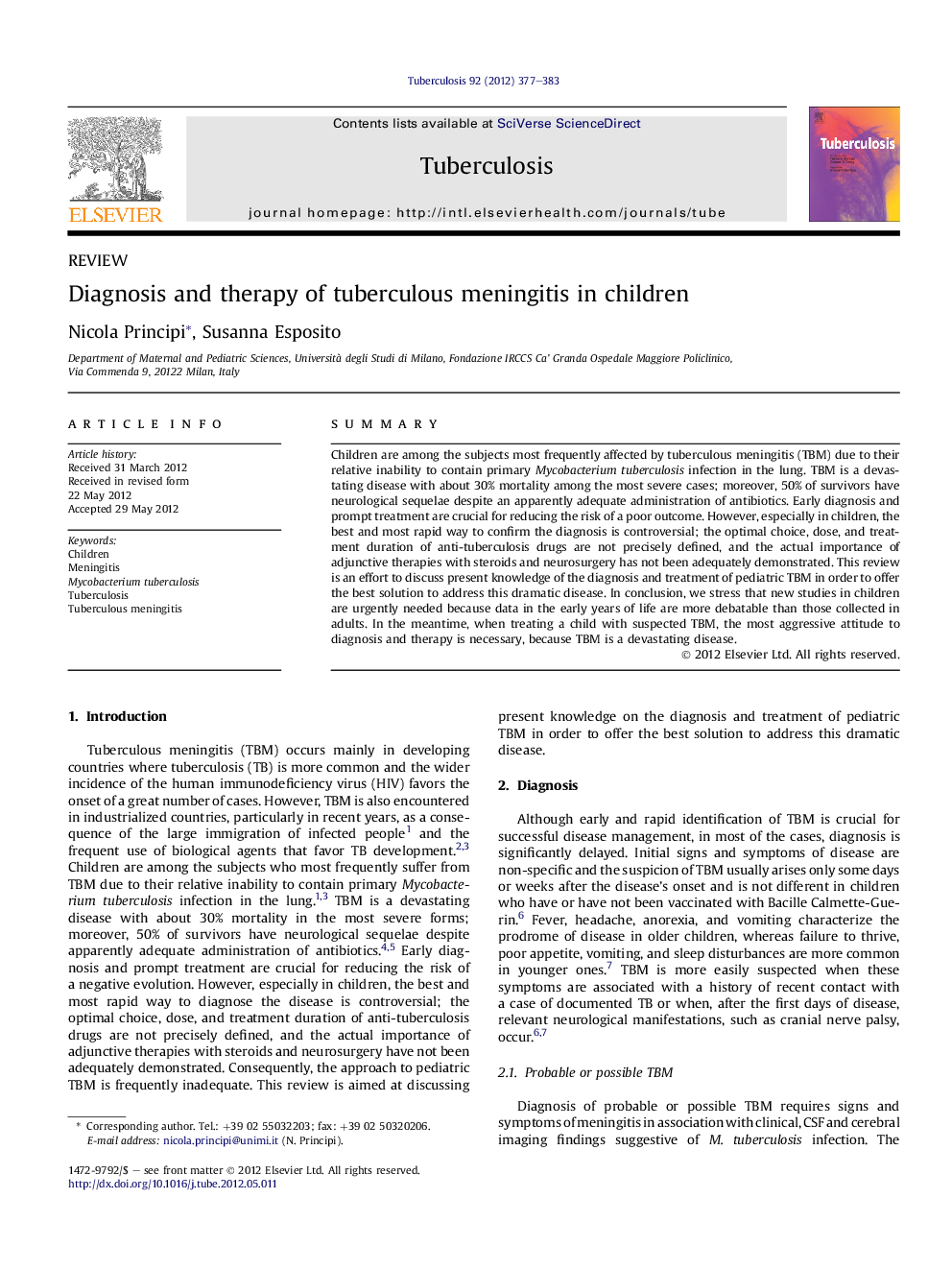| Article ID | Journal | Published Year | Pages | File Type |
|---|---|---|---|---|
| 2401517 | Tuberculosis | 2012 | 7 Pages |
SummaryChildren are among the subjects most frequently affected by tuberculous meningitis (TBM) due to their relative inability to contain primary Mycobacterium tuberculosis infection in the lung. TBM is a devastating disease with about 30% mortality among the most severe cases; moreover, 50% of survivors have neurological sequelae despite an apparently adequate administration of antibiotics. Early diagnosis and prompt treatment are crucial for reducing the risk of a poor outcome. However, especially in children, the best and most rapid way to confirm the diagnosis is controversial; the optimal choice, dose, and treatment duration of anti-tuberculosis drugs are not precisely defined, and the actual importance of adjunctive therapies with steroids and neurosurgery has not been adequately demonstrated. This review is an effort to discuss present knowledge of the diagnosis and treatment of pediatric TBM in order to offer the best solution to address this dramatic disease. In conclusion, we stress that new studies in children are urgently needed because data in the early years of life are more debatable than those collected in adults. In the meantime, when treating a child with suspected TBM, the most aggressive attitude to diagnosis and therapy is necessary, because TBM is a devastating disease.
